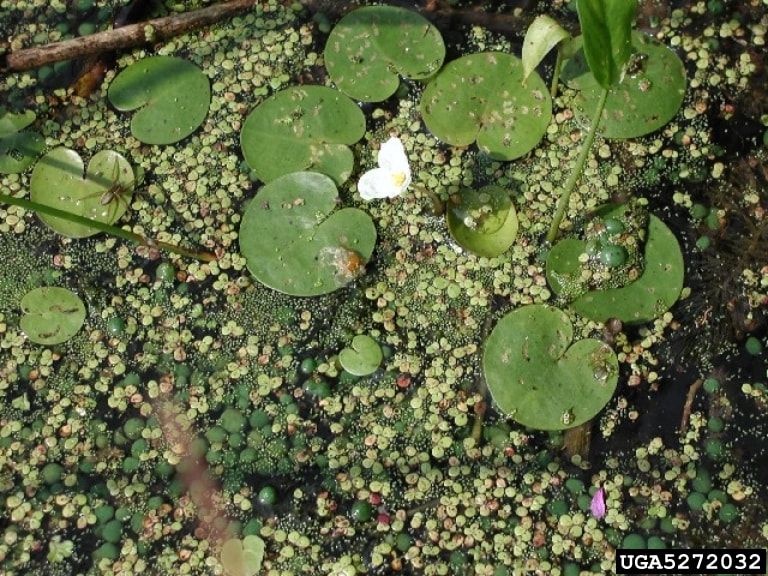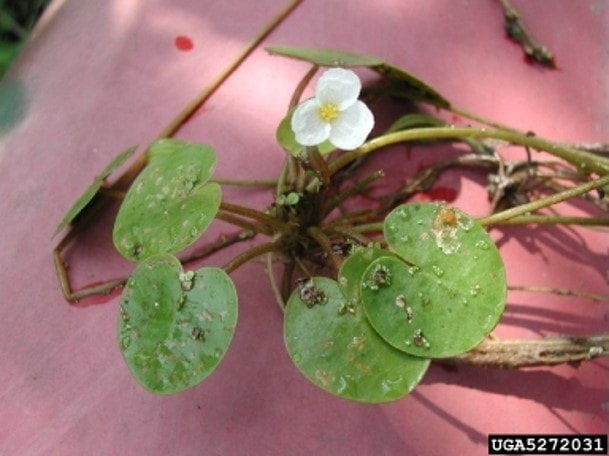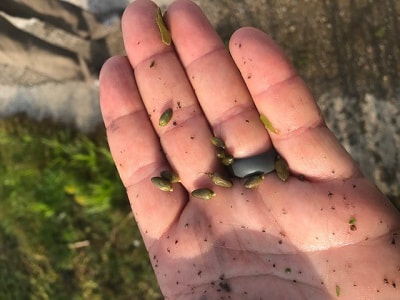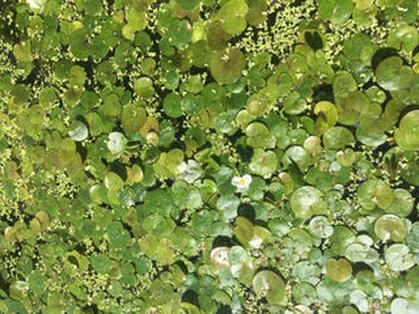European frog-bit (Hydrocharis morsus-ranae) is a free floating aquatic plant native to Europe, Asia and Africa. It is believed to have spread from a cultivator in Canada in 1939, spreading south into the Great Lakes. It was first documented in the United States in 1974, and in Saginaw Bay in 2015. European frog-bit (EFB) is listed as a high-risk invasive species by the Michigan Department of Agriculture and Rural Development due to its ability to establish quickly and potential for damage to aquatic habitats. The plant has strong, cord-like stolons beneath the water's surface that tangle together individual plants together into dense, floating mats. These mats get trapped in boat motors, and can clog drain and irrigation channels. The mats also reduce light and oxygen availability in the water, negatively impacting native plants and wildlife.
EFB reproduces vegetatively through small seed-like structure called turions, which bud from the plant's stolons under the water. These turions bud from the parent plant and are carried down stream by currents, or hitchhike to new locations on the sides of boats, trailers, and other recreation gear. Always wash your boat off with a power washer after leaving a European frog-bit infested area and let the boat drain and dry before entering a new body of water. Prevention methods like these save thousands of dollars in treatment, and helps keep lakes and rivers clean and safe. Failure to do so may result in a fine of $100.
EFB reproduces vegetatively through small seed-like structure called turions, which bud from the plant's stolons under the water. These turions bud from the parent plant and are carried down stream by currents, or hitchhike to new locations on the sides of boats, trailers, and other recreation gear. Always wash your boat off with a power washer after leaving a European frog-bit infested area and let the boat drain and dry before entering a new body of water. Prevention methods like these save thousands of dollars in treatment, and helps keep lakes and rivers clean and safe. Failure to do so may result in a fine of $100.
|
Identification:
|
Habitat:
Shallow, slow-moving water on the edges of lakes, rivers, streams, swamps, marshes and ditches.
Shallow, slow-moving water on the edges of lakes, rivers, streams, swamps, marshes and ditches.
Saginaw Bay CISMA is part of the European Frog-bit Collaborative, a collective group government departments, agencies, universities, CISMAs and other stakeholders with the shared goal of controlling and eradicating invasive European Frog Bit. The EFB Collaborative was created to identify research needs and inform management efforts to control the spread of EFB. Learn more at https://www.efbcollaborative.com/
Additional Resources
European Frog-bit Control and Management Guide
EFB Identification and Reporting Power Point
EFB Poster for Waterfowl Hunters
MDARD Weed Risk Assessment for EFB
MISIN Invasive Species Training Module




